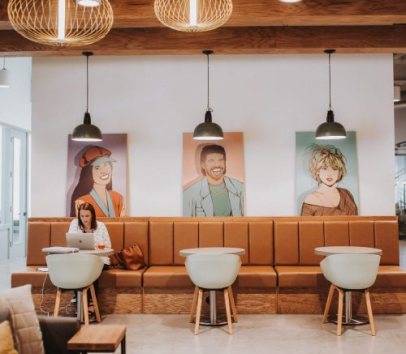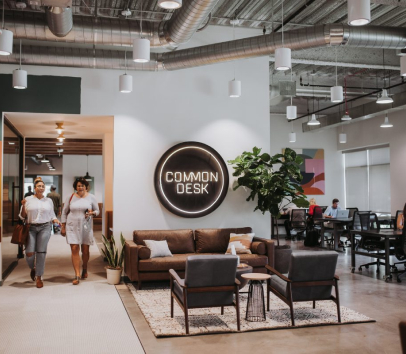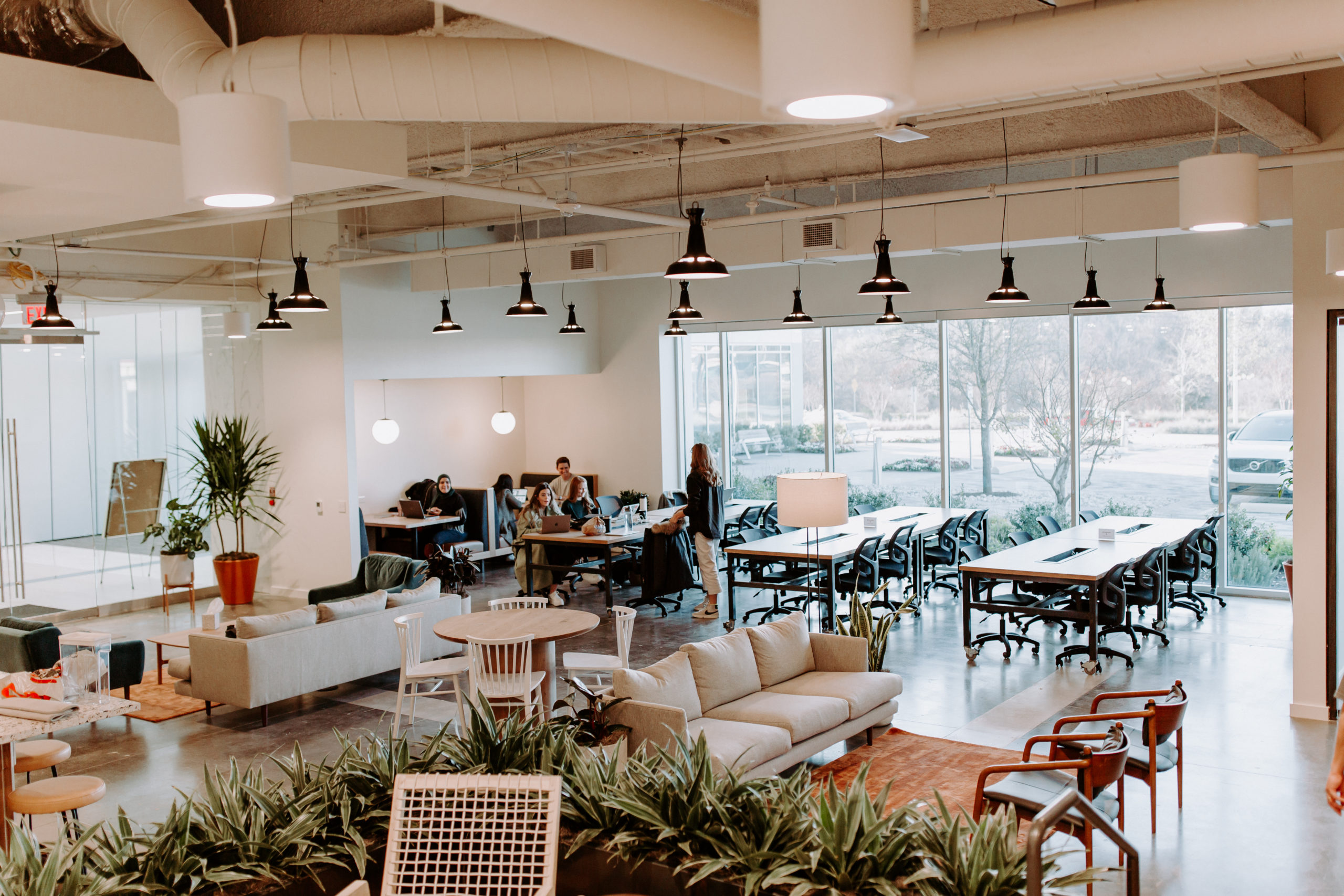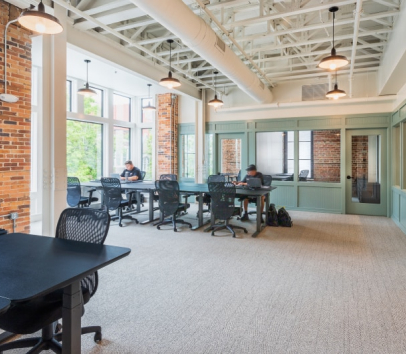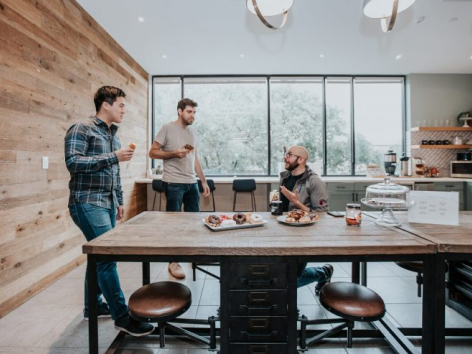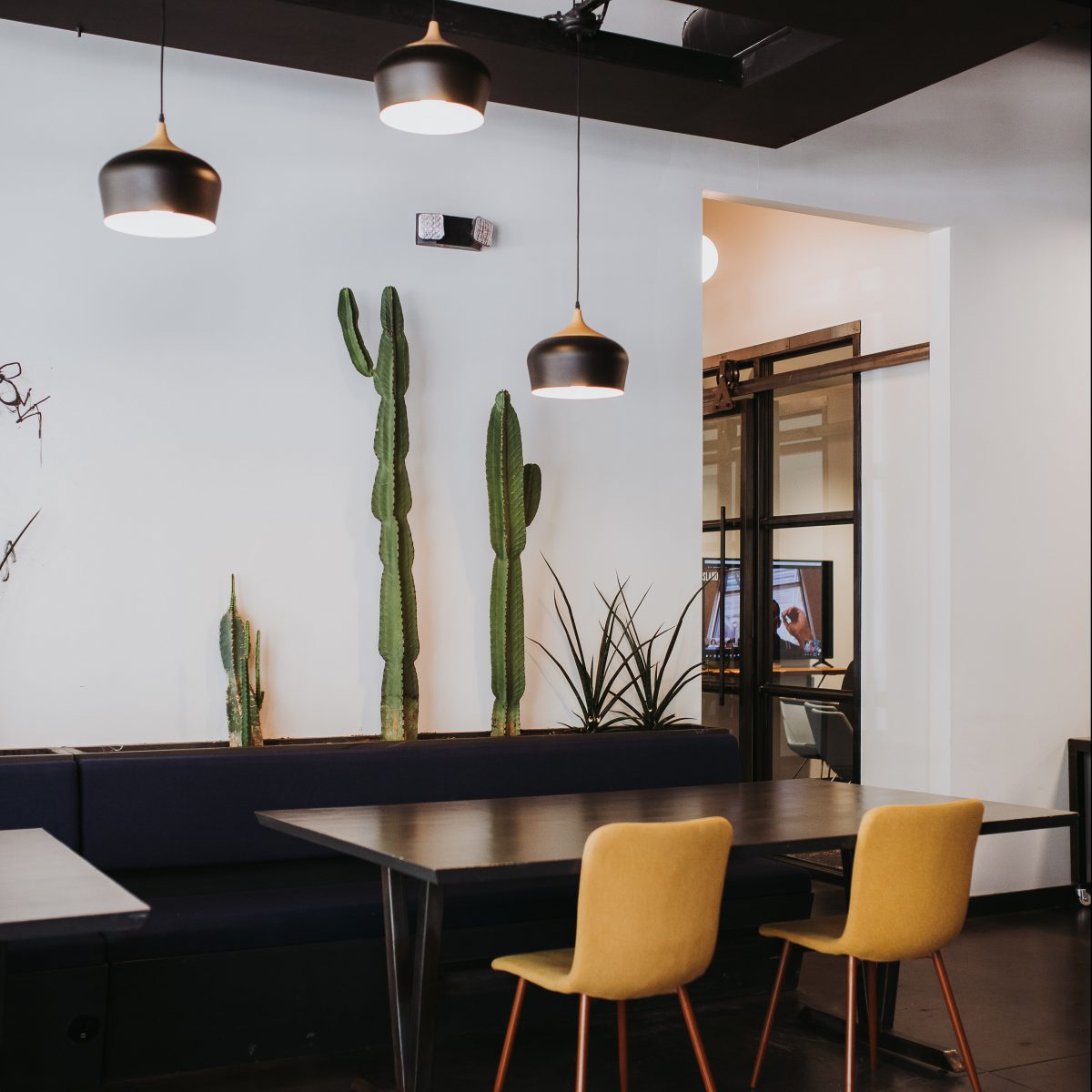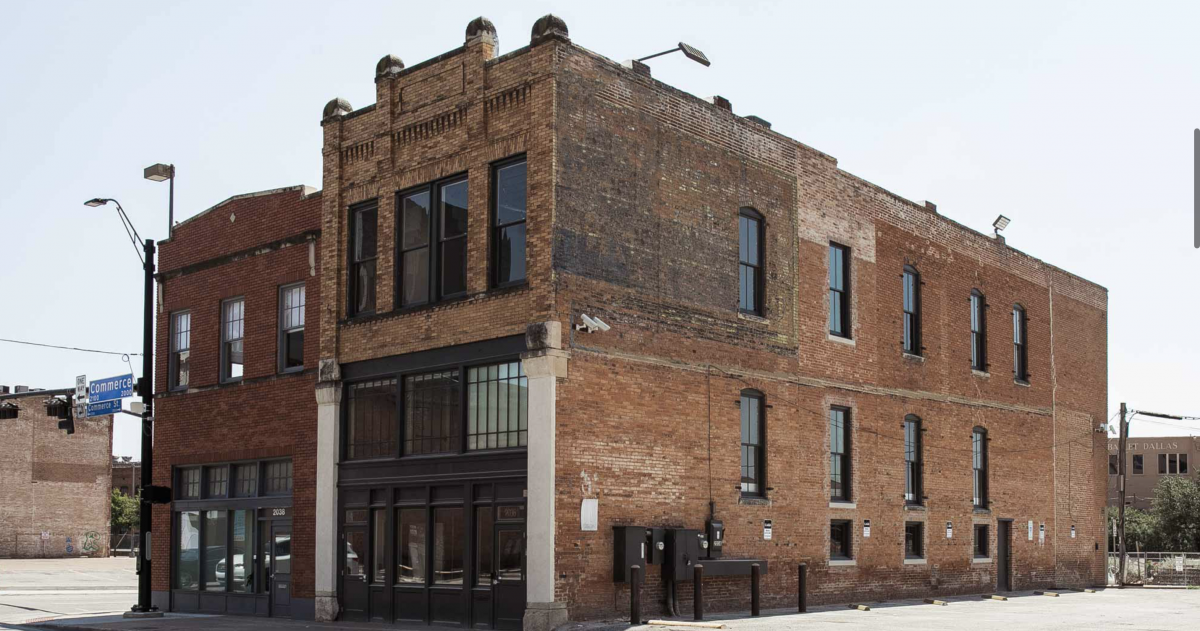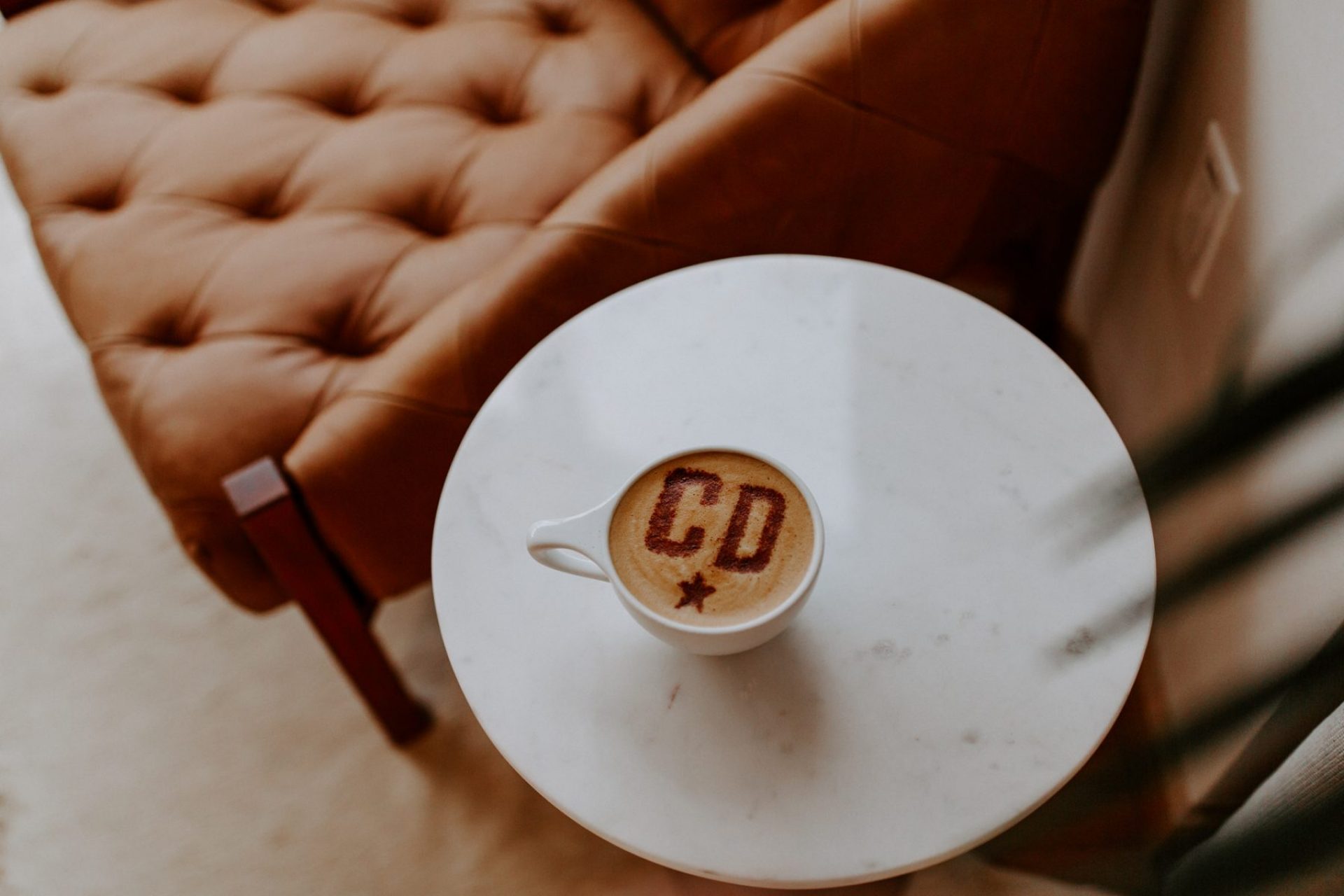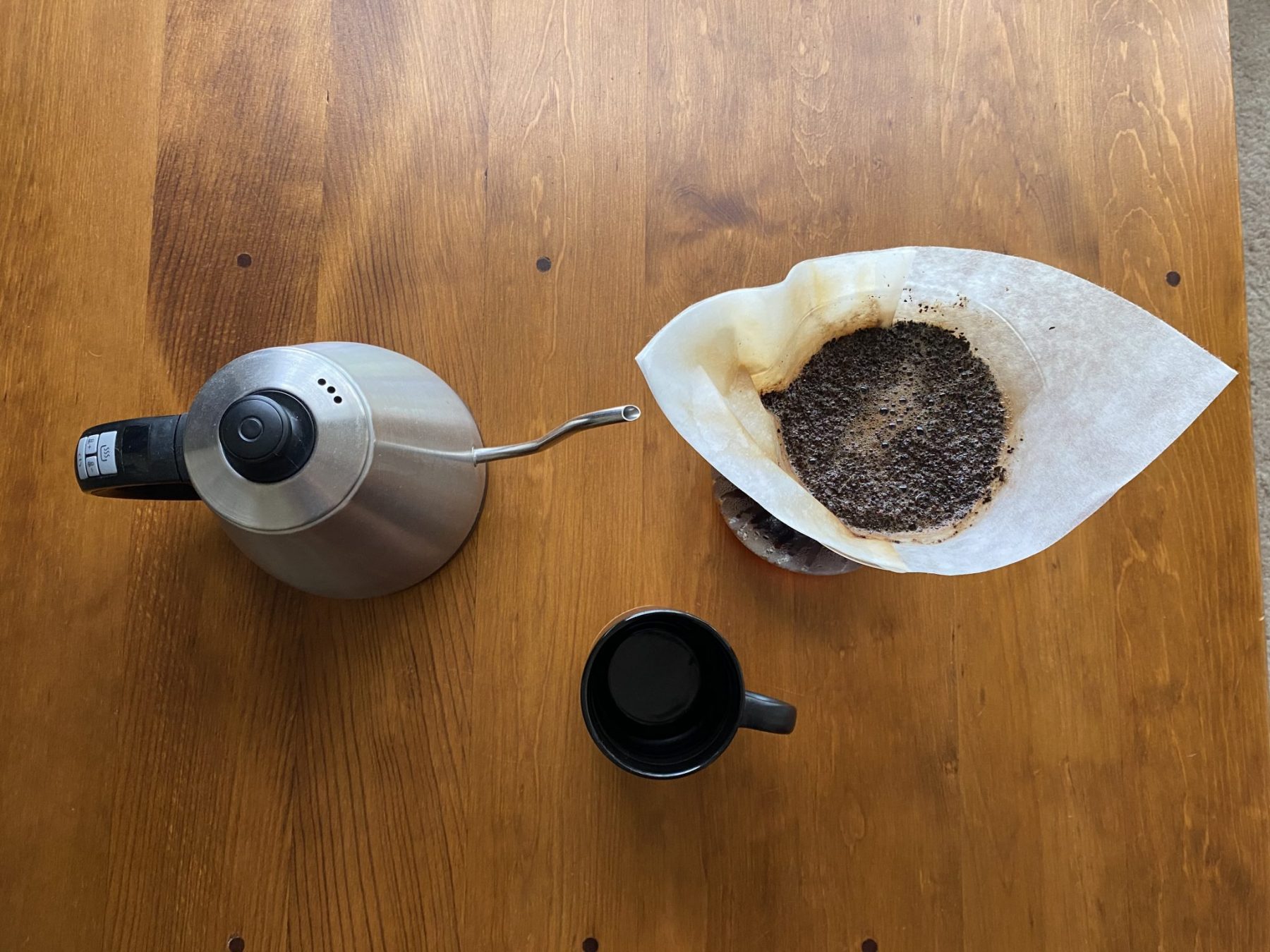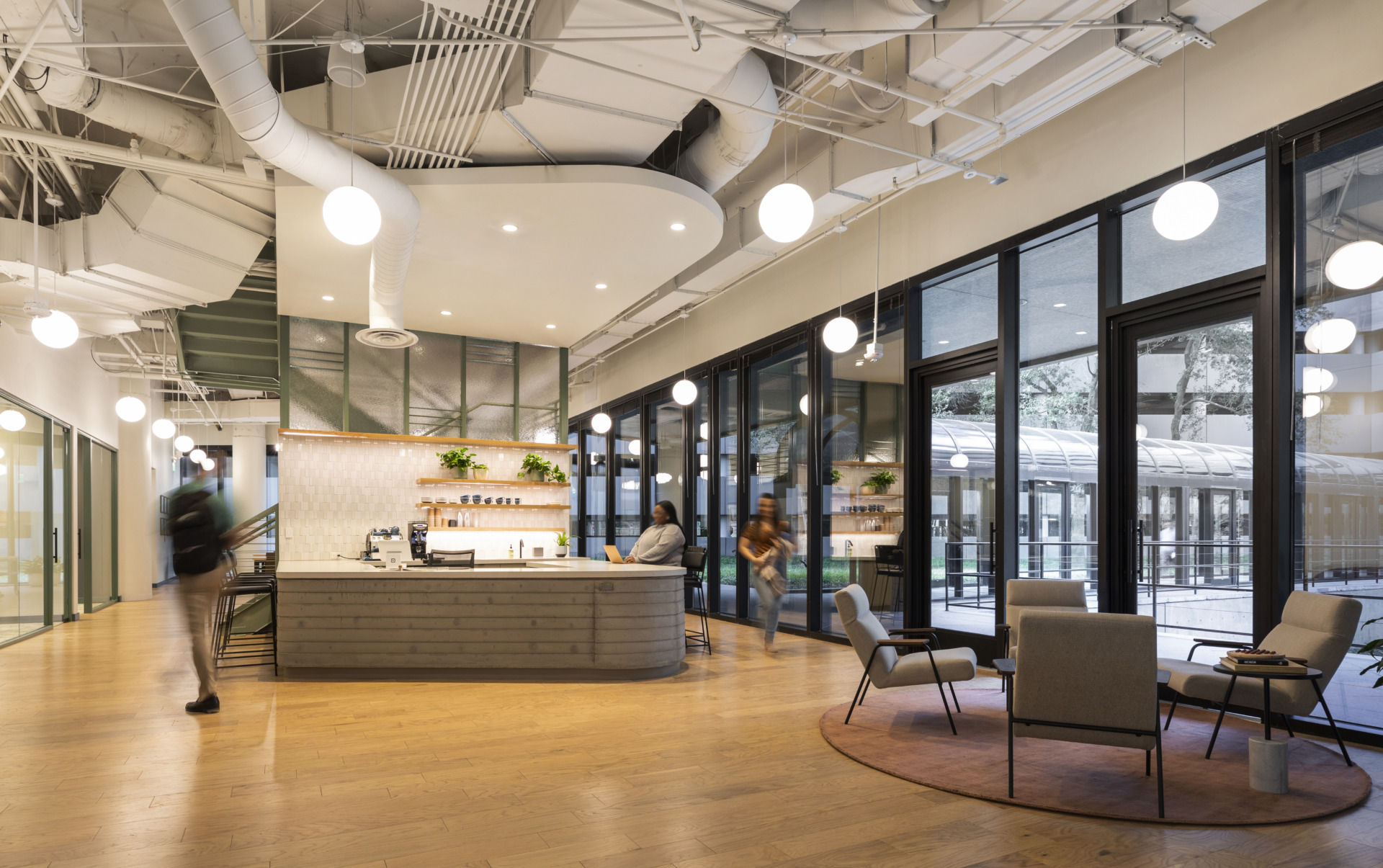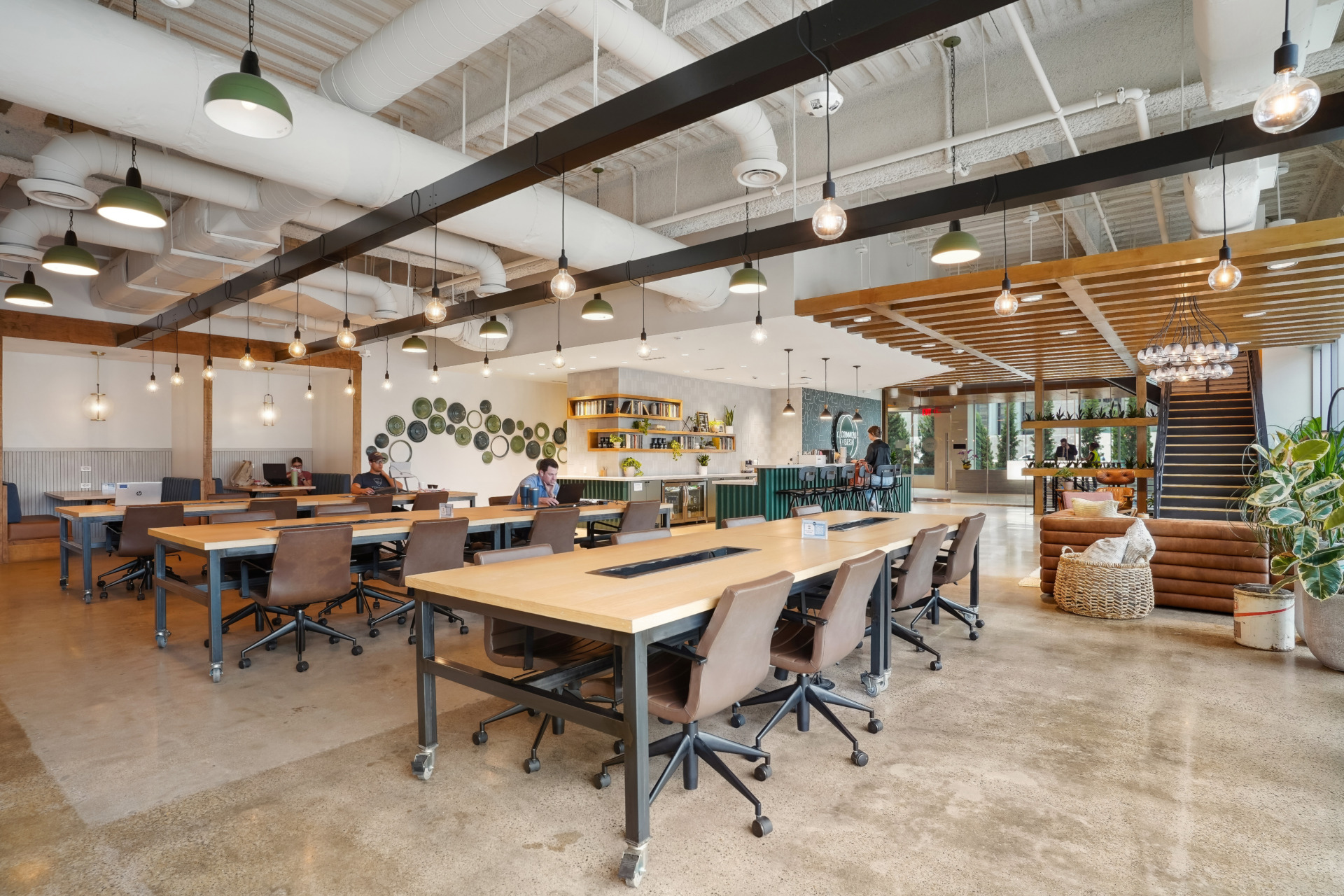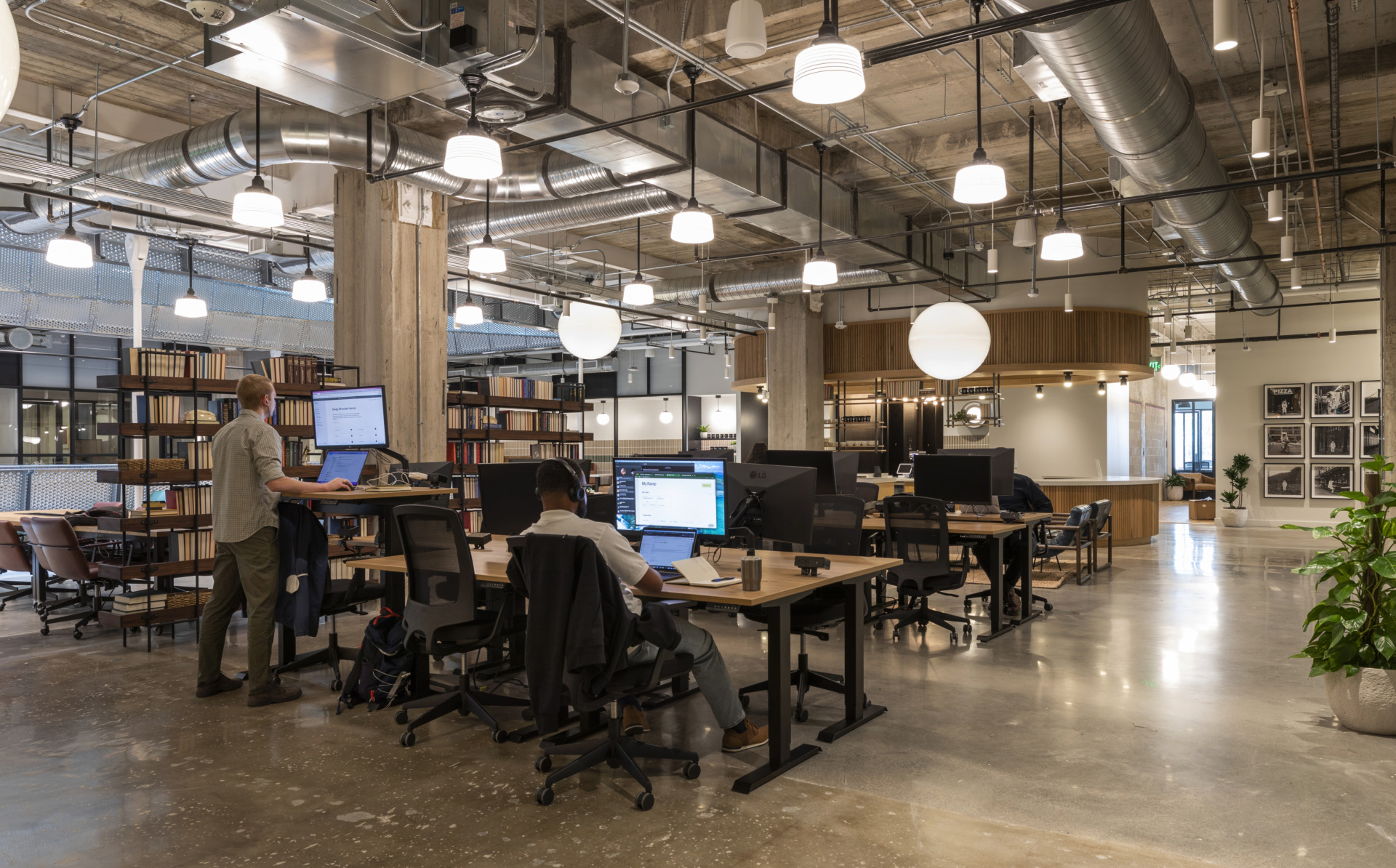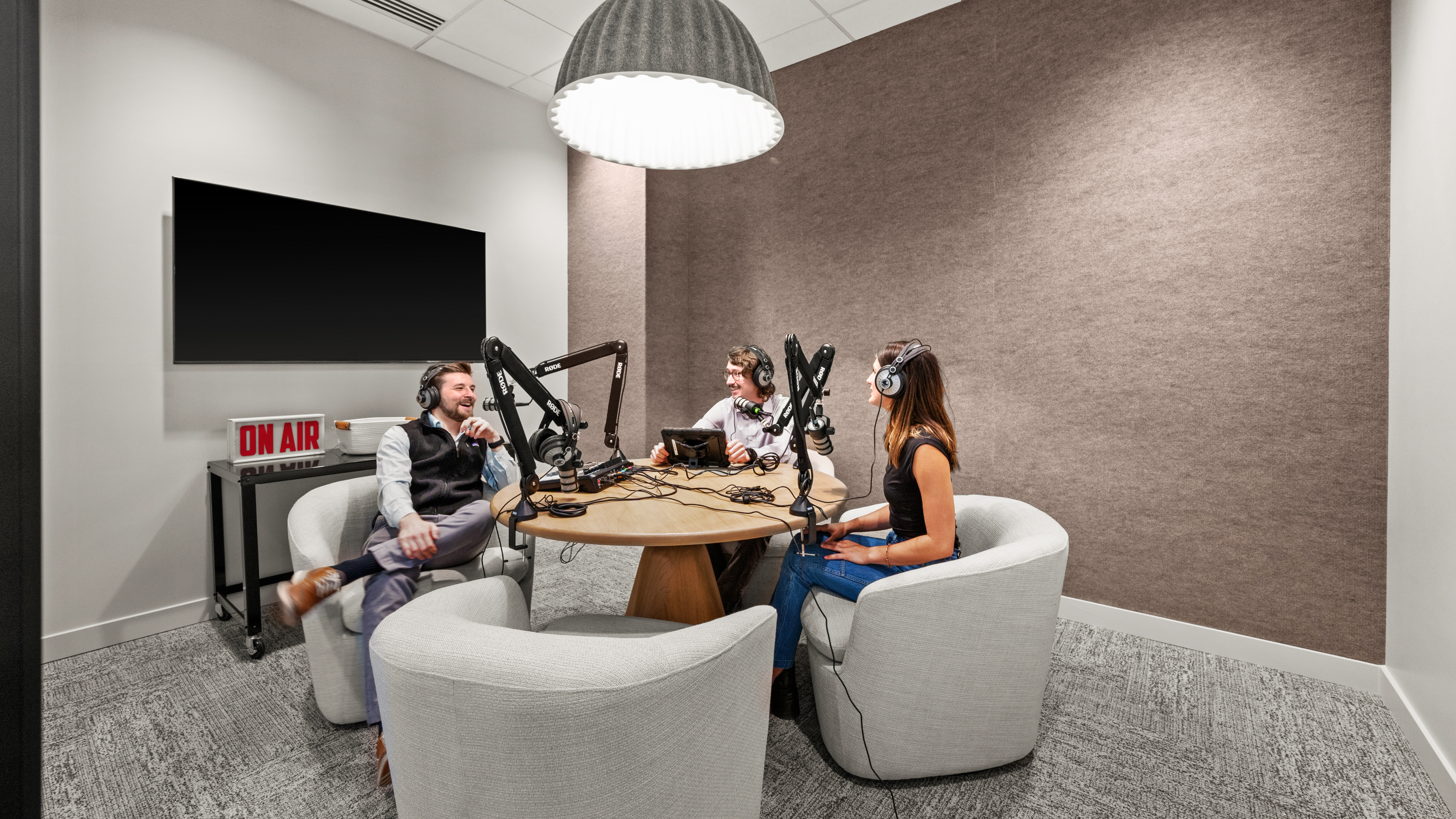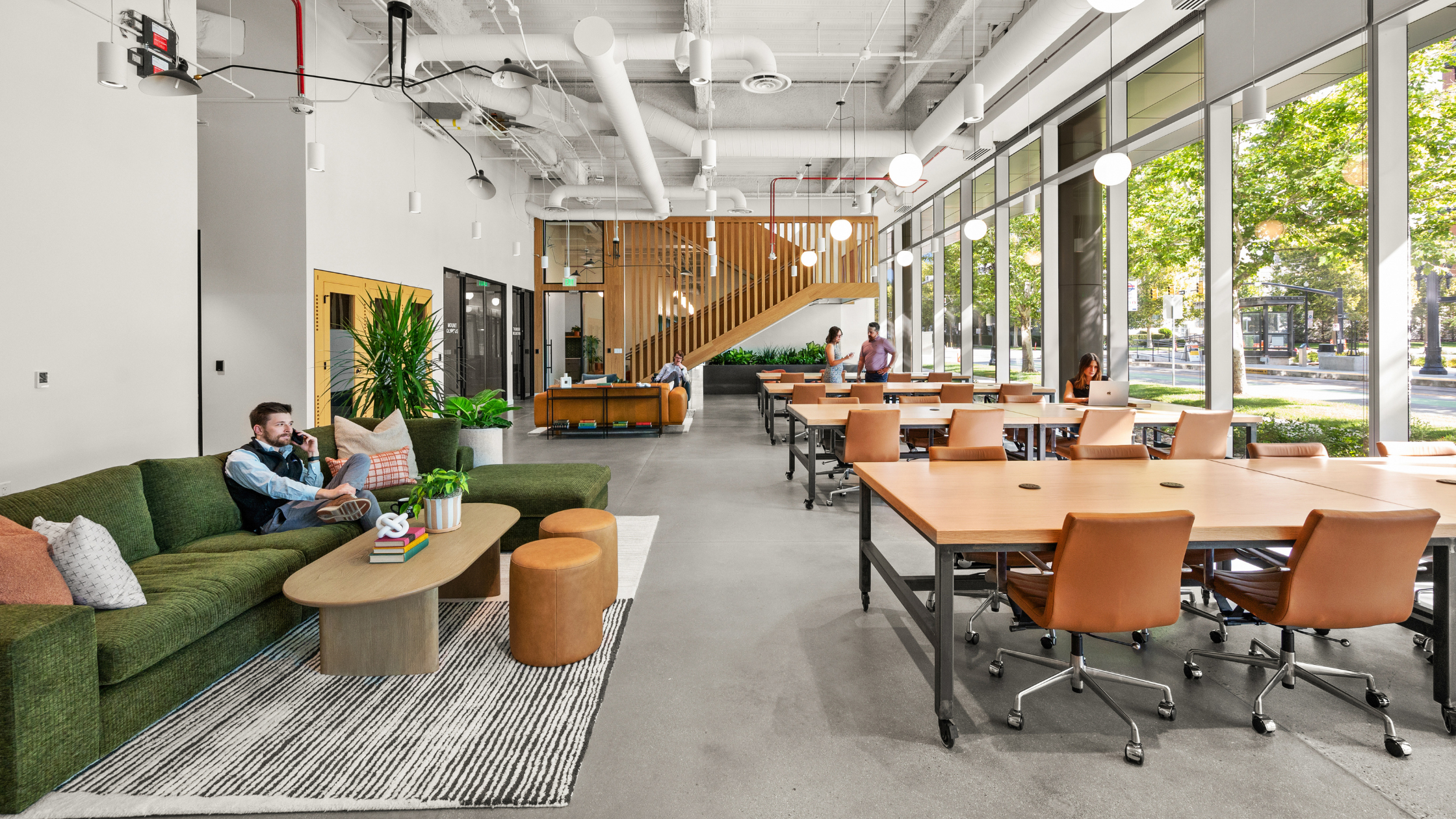If there’s one thing that spending more time at home in 2020 has taught us, it’s the importance of brewing a good cup of coffee at home. Nothing fuels you more throughout the day than a strong, flavorful cup of joe to start the morning, and nothing throws your day off more than working hard to make your own coffee only to find it tastes bitter, sour, or just didn’t work at all. When you’re a member of Common Desk, you get quickly spoiled by the quality of drip coffee that’s available to you all hours of the day (thank you, Fiction Coffee & Counter Culture!), so in mid-March, when we all abruptly transitioned into stay at home orders, our community Slack #coffee channel was buzzing with questions around how to make better coffee at home.
Since Common Desk is full of coffee aficionados–both members, staff, and baristas alike–we figured we’d compile some of the tips we’ve learned through the knowledge we’ve been sharing over the past few months to help anyone trying to up their coffee game at home know where to start!
If you’re wanting to brew your own coffee at home, a great place to start is by choosing the method that intrigues you most or works best with your daily routine and capacity. The following wisdom was shared by our very own Director of Coffee (yep, that’s a real title at Common Desk!)–Spencer Fox–who walked us through At-Home Coffee 101 earlier this year (you can watch a video recap of the Zoom tutorial here). We’ll sprinkle some of Spencer’s third wave coffee tips and equipment recommendations throughout the post.
Let’s begin with the basics.
A few great at-home brewing methods for coffee include:
- French press
- Pour over
- Chemex
- Automatic drip machine
- Aeropress
- Cold brew kit
Now that the brewing methods are laid out, let’s do a quick rundown on the fundamental factors that go into making a good cup of coffee.
1: Get your water right
We all know that you can’t have coffee without water. And as unglamorous as it sounds, having both the right water (filtered, always) and the right kettle to get your water to the perfect temperature are key in making sure your coffee at home tastes as high-quality as possible.
Essential item: the right kettle! Spencer’s recommendation: the Bonavita variable temperature kettle. Highlights: it’s accurate, lasts forever, great for teas too, and affordable.
Water tip: bring your filtered water to a boil, turn off for a few seconds, then pour to brew your coffee (you’re aiming for a temperature between 195 -205º Fahrenheit).
Words of wisdom: Use filtered water! If you don’t have a filter, Ozarka is also a good option. Tap water comes with various minerals that can alter/affect the notes of your coffee and final outcome of the brew.
2: Get your grind right
The grind size of your coffee is really important. Depending on your brewing method, as well as your coffee bean, your grind size will change. Every bean has a natural coarseness, water solubility, and flavor profile to it, meaning different beans require different grind sizes.
Essential item: a quality automatic grinder! Spencer’s recommendation: Baratza Encore grinder. It’s a little more pricey, but it’s worth it if you really want to make great coffee at home because it boasts a more consistent grind, and it’s long lasting.
3: Have a scale and measure up
It’s important to weigh both the amount of coffee that you’re grinding to the volume of water you’re using.
Use a scale that has a timer built in. A simple one like this does the trick, but if you’re feeling fancy, check out Hario’s options.
Counter Culture Coffee recommends using 1.6–2 grams of whole bean coffee per 1 oz (28 grams) water, adjusting to taste.
4: Have the right coffee filter for your brewing technique
Depending on which of the at-home brewing methods mentioned above you decide to use, you’ll need a certain coffee filter to match (trust us, drip coffee filters aren’t what you want for a pour over technique).
Recommendation: Melitta filters. They make different versions for different brewing methods.
5: Find the perfect bean!
Nothing beats the feeling of buying a new bag of coffee from a local coffee shop, opening it for the first time to smell its notes, and tasting its glory at home with the right brewing method.
Now more than ever, it’s so important to support local coffee shops, and buying bags of coffee is such an easy, effective way to do just that! You might be a fan of Starbucks, but if you can, try opting to support the local shops that are doing all they can to make it during this season. Odds are, there’s an amazing craft coffee shop just around the corner from the jolly green giant that would be delighted to serve you!
If you’re looking to do a deeper dive on some of the fundamentals of brewing great coffee at home, check out Counter Culture‘s resource center for tips, or find a virtual workshop on their site!
Now that we know some of the basics, let’s take it a step further and touch down on a good how-to for one of the fan-favorite home brewing methods of coffee: the pour over.
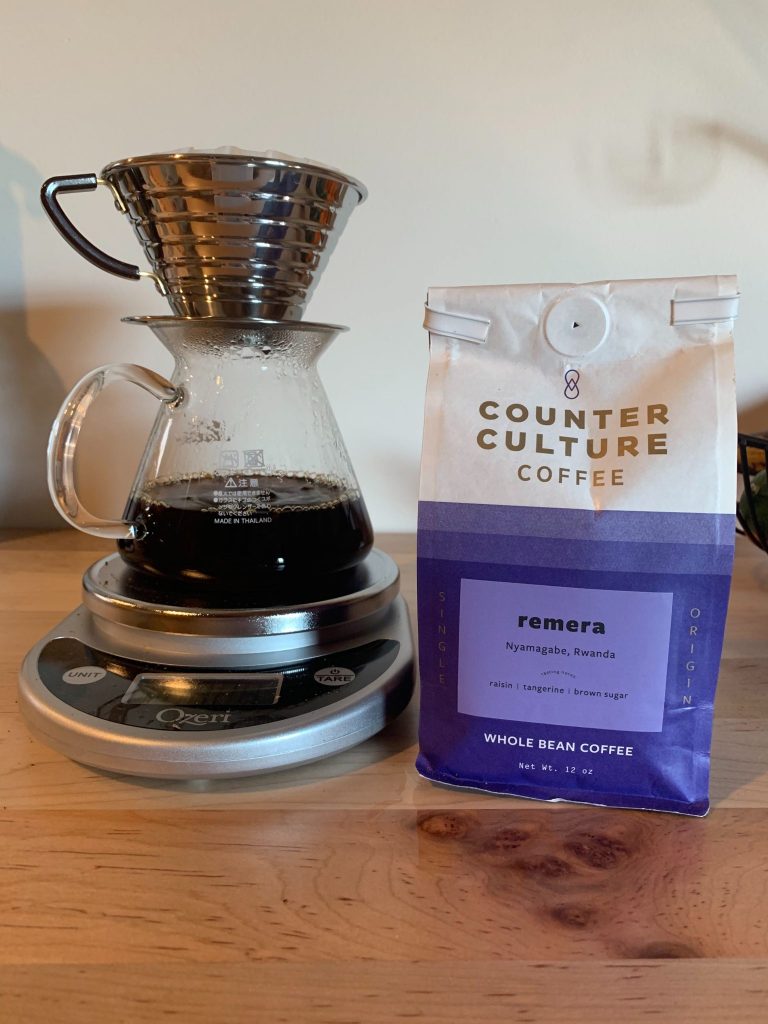
Steps for making solid pour over coffee at home:
- Set up your coffee filter, vessel, and heat up your filtered water in the kettle.
- Grind your coffee at the bean’s recommended grind size; pour over requires a slightly finer grind–similar to size of table salt.
- Water to bean ratio tip: 2 tbsp of coffee per 6oz of water used | 24-26g of coffee for a 10-12oz cup of coffee.
- Pre-soak your filter to heat up your vessel and wet the filter.
- Empty out the water used for your pre-soak.
- Once the hot water reaches the temperature and your beans are ground, pour the grinds into your soaked filter + pour over vessel, and prepare your pour!
- If you have a scale, zero out your weight so you can measure the amount of water you’re adding to get the perfect cup, and start your timer as you begin to pour. Here’s a nice time table to follow:
- Start: 10 second pour, 30 second bloom. Consistently pour until you hit 2 minutes and 30 seconds!
- Bloom: activation of the coffee, igniting oils and CO2 coming off the grounds to begin the extraction process of brewing
- As you go, slowly (and we mean slowly) pour in a circular motion, wetting all of the grounds along the way. Pour consistently until you reach the top of the filter, and keep going until you get to either your time stamp of 2:30 or the weight of water you’re measuring.
- Pour-over vessel recommendation: the Kalita Wave–a flat bottomed pour over vessel with ribbed sides that’s built to aid consistent flow of water throughout your pour over.
- Your goal with your pour is to have a flat bed of coffee in your filter as you go.
- And that’s it! Once you’ve poured the desired amount of water through your filter and all the coffee has dripped into your mug or carafe, simply sit back, take a big sip, and enjoy.
Fun fact: you can save used coffee grounds for composting or gardening!
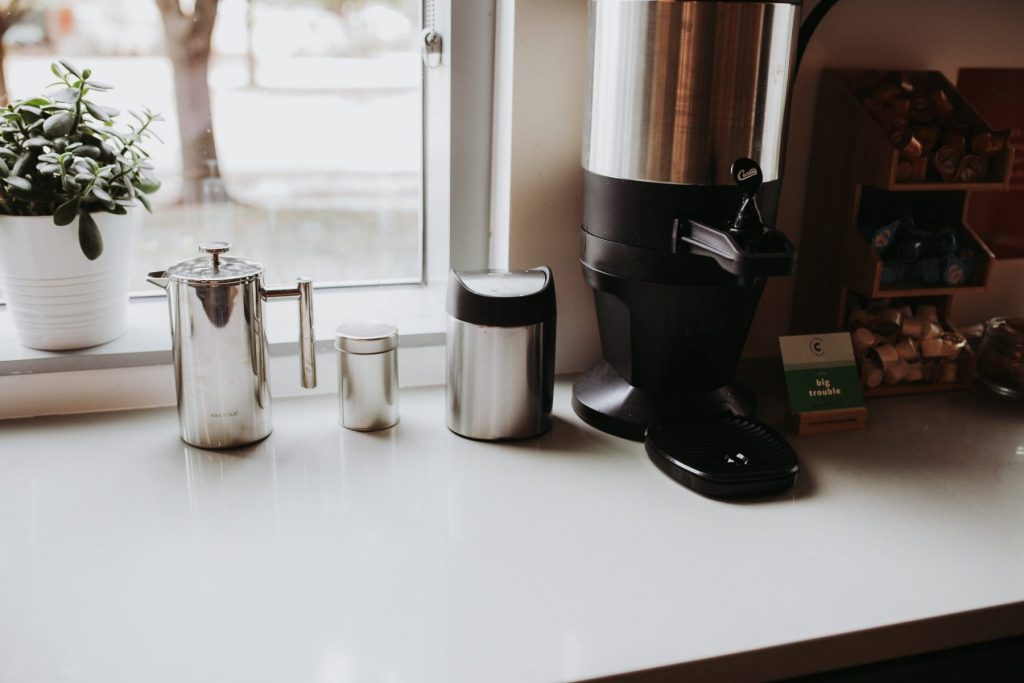
We won’t touch base on the specifics of all our other favorite at-home coffee brewing methods in this post, but we can’t leave you without one of the tried-and-true methods: the automatic coffee machine.
Using an automatic coffee maker is your simplest option for at-home coffee brewing.
Spencer’s Recommendation: the Bonavita brewer, which, depending on which one you get, can brew up to 5 cups of coffee; this is a great for 2 people! Filters: Melitta filters, like we linked earlier in the post, come with lines to help you measure what amount of ground coffee you need.
We prefer this Bonavita brewer over over a Keurig or Mr. Coffee maker, because these others simply do not hit the extraction brewing temperature that you need for a good at-home cup of coffee. The Bonavita gives more flavor with better extraction. Its thermal, insulated vessel keeps coffee hot for 3-4 hours without burning it (the dream).
Tips for using automatic coffee makers:
- Make sure you pay attention to your water to coffee ratio. It’s easy to simply toss some water into the machine and eyeball the coffee grind amount as you pour into the filter, but taking an extra minute to measure these out will make all the difference!
- A note on the pulsing vs straight brew method: pulsing gives for more extraction, which is great for single origin beans, but for a traditional coffee, straight brew is just fine.
- Tips: You can tell your coffee grind is too fine if it tastes too bitter as you first sip. On the other hand, you can tell if it’s too course if it doesn’t have enough flavor and/or tastes too watered down.
- Try to stay away from automatic brewers that have warmers under them (looking at you, Mr. Coffee). Why? Once the coffee is heated up, it doesn’t need to get added heat because it will cook/oxidize and change the flavor. If flavor isn’t your concern, then they’re fine! It’s up to your taste preference.
Now that you know a few tricks of the trade for two of the most popular brewing methods for at-home coffee, we’ll leave you with a few coffee questions, answers, and at-home brewing styles shared on the Common Desk community Slack:
At-home brewing technique from member Brent K:
“My wife uses a Bonavita automatic brewer, but my morning ritual consists of pour over with a Kalita wave 185. To grind, I use a Baratza Encore. I use a Bonavita electric kettle and a Hario scale. I keep my beans fresh in an Airscape container. We have reverse osmosis water which is great, but it strips everything, so I remineralize our water with Trace mineral drops. It may sound crazy, but I can can taste a big difference between plain RO water and remineralized in my coffee. It also changes the time in the Kalita, so my grind size changes significantly. I think the minerals help draw out more flavor from the beans. I also make my own coffee syrups!”
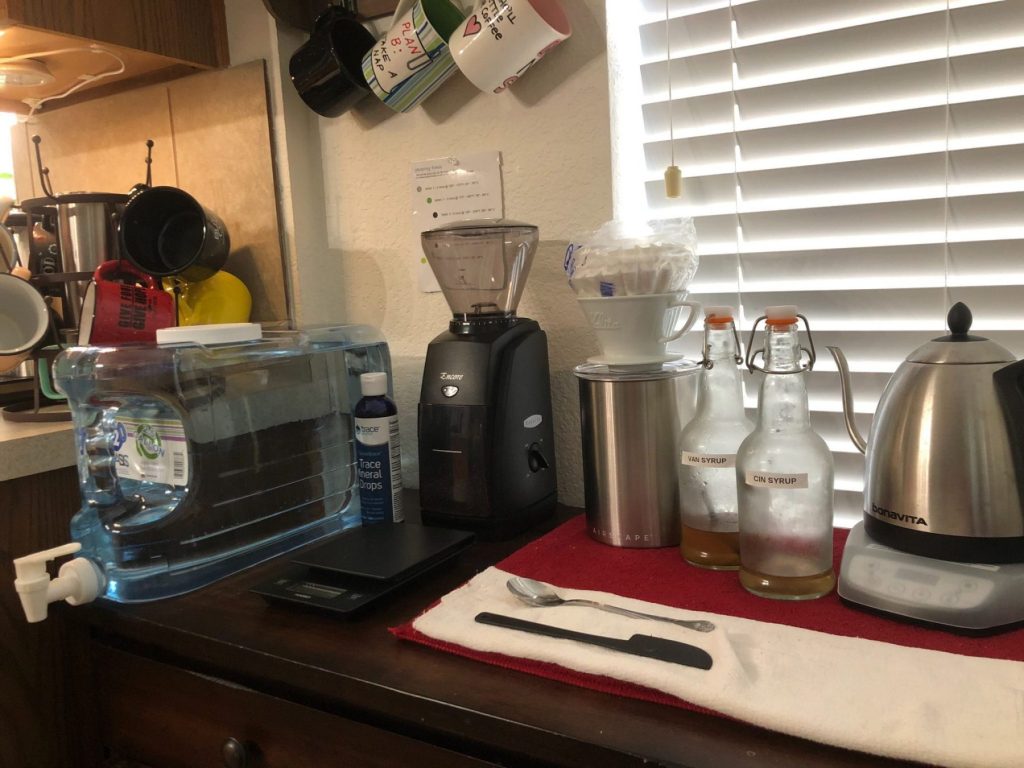
Question from Jack F., Member:
Q: “What’s the best way to pack your own reusable Keurig K-cup? Is there a special technique? How dense should you compact everything? Must you grind a fresh self-portion everyday? What do you do when CD is not there to make your daily cup of coffee?”
A: Fresh is always best! As well for k cups I, recommend full but not packed tight so water can still flow through it. Usually go with a finer grind, as well.
Question from Megan B., Staff:
Q: “What do you recommend for care/maintenance of the Baratza Encore grinder?”
A: Taking the hopper off, wiping all the burrs off with a dry towel and brush (unused paint brush) works wonderfully. You can also vacuum out the inside to get all the loose coffee that fell below the hopper. Try not to throw it upside down to shake coffee out–it doesn’t like that! See this link for a how-to: https://www.youtube.com/watch?v=1CvqxvhJ-IU
Question from Elyssa L., Member:
Q: “Any recs for a french press?? Mine broke so I’m in the market for a new one!”
A: Easy: the tried and true Bodum!
There’s something natural and powerful about coffee that always seems to bring people together, and nothing has brought us more joy in the past few months of distanced interactions than connecting with our members and team over talks of coffee, virtual how-to’s, and even sharing pics of our favorite mugs to sip from at home each morning. Wherever you are on your coffee journey, we hope this post helps you get one step closer to making and mastering the perfect at-home cup of joe!

